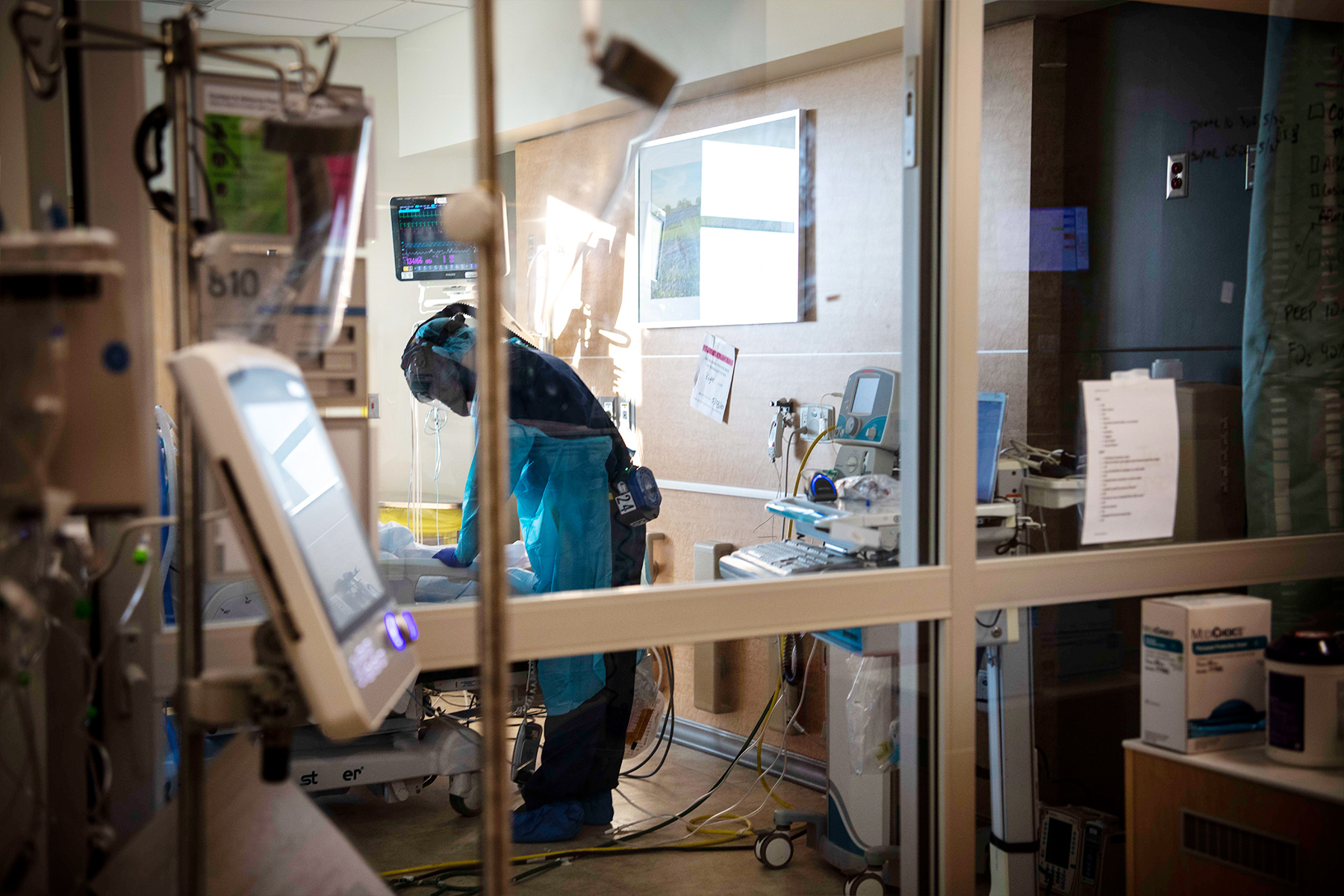The battle against the COVID-19 virus steals the headlines, but another war is being waged under the surface. Data analytics professionals and public health officials are constantly fighting to stay ahead of the massive amounts of data generated by the pandemic. In Dallas, the Parkland Center for Clinical Innovation leads that effort and develops lessons for future pandemics.
Over the last several months, PCCI has predicted and readjusted its predictions for when North Texas would reach “herd immunity,” defined as when a certain percentage of a population is protected against the virus either through vaccination or post-infection antibodies. Like so much of the medical and scientific world over the last couple of years, the unprecedented nature of the pandemic means that what is a best practice one day becomes obsolete the next. But in a peer-reviewed study published in the New England Journal of Medicine‘s media outlet Catalyst, experts from PCCI help us understand why the virus is acting the way it is and what we can learn from it in the future.
The study is called “Rethinking Herd Immunity: Managing the Covid-19 Pandemic in a Dynamic Biological and Behavioral Environment” and helps explain why Dallas is experiencing new COVID-19 cases and hospitalizations at a rate as high as ever. Despite predicting reaching herd immunity earlier in the summer, PCCI has moved the date back and increased the percentage required to reach the barometer from 80 percent to 95 percent. Societal immunity is a moving target because of the dynamic nature of four factors: infection-related immunity, vaccine-related immunity, the opportunity of the virus, and the infectiousness of the virus.

With new infections on the rise, vaccine rates picking up, society more or less returning to normal, and new variants emerging, all these factors wax and wane, and with each change, immunity levels shift as well. Right now, the paper estimates, it will take 95 percent immunity to reach a sustainable level of societal protection. But why does that matter?
“The interplay between these four factors can help us to understand the extent of projected Covid-19 community protection in the U.S. and direct more locally targeted efforts to protect communities at greatest risk,” the paper reads. In essence, understanding where vaccine rates are low, infection rates are high, where vulnerable populations live, and which variants are spreading where help inform public health authorities on how to direct resources to areas that need them the most.
In Dallas County’s 94 ZIP codes, 40 percent of the population had complete vaccination. PCCI initially estimated that July 4 would ring in an immunity threshold for the area. When that date arrived, 45 of those ZIP codes were under the 80 percent threshold, and eight communities had below 50 percent immunity. What matters more than an overall average is how the pandemic is impacting smaller communities. That level of data can help public health officials direct their efforts to the ZIP codes and neighborhoods where the virus has more opportunity to spread.
“The data are confirming how dynamic this is. You need to recalculate these as a new variant emerges,” Miff says. “When a new variant comes, you need to reassess everything and relook at everything.”
Hospitals, too, can’t always pivot on a dime. They need to understand trends and how infectious diseases impact specific communities so they can prepare for emergency department admissions and reserve the bed space, ventilators, and staff to treat what may be a surge of patients. “They can’t change the hospital in a day, but if they have two or three weeks, they can adjust to be able to meet those needs,” Miff says. “That’s something coming out of this pandemic we’ll be able to do and be helpful moving forward.”
Though each community is unique, PCCI’s work may apply to a broader audience. The streamlining and sharing of the data is always essential, but it becomes even more so during a pandemic. “Hopefully, what translates nationally is how important it is to have those partnerships that have focused on the data infrastructure, the skills, and the reporting of the data so this can be done fast and in a sustainable manner.”






